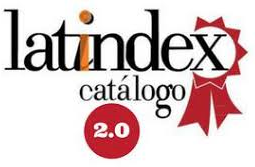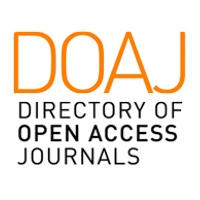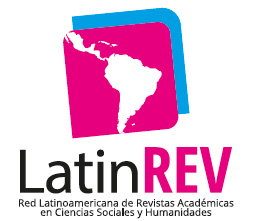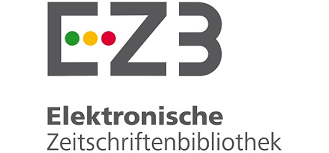Background television: between the domesthic and the company
Notes on a study in reception
DOI:
https://doi.org/10.51385/ic.v2i17.185Keywords:
television, consumption, reception, youths, prensa argentinaAbstract
This article exposes partial results of a broader investigation on the process of production and consumption of panel programs on air channels in the city of Buenos Aires. It focuses on a specific aspect related to the "way" in which young people between the ages of 18 and 24 residing in the Buenos Aires Metropolitan Area consume television during the pandemic. For this, semi-structured interviews were conducted. The results obtained show that television consumption is carried out in parallel to the performance of other activities that may be work and/or domestic. Likewise, a use of television as a company is verified. This type of practice encourages inattentive consumption and the television medium assumes a more radio function.
Downloads
References
AA.VV. (2017). Dossier estadístico sobre uso y distribución del tiempo libre. Instituto Nacional de Estadística y Censos – INDEC. https://www.indec.gob.ar/ftp/cuadros/sociedad/dosier_tiempo_libre_06_23.pdf
AA.VV. (2017). Encuesta Nacional de Consumos Culturales. Ministerio de Cultura. https://www.sinca.gob.ar/Encuestas.asp
Chadwick, A. (2013). The hybrid media system: Politics and power. Oxford: Oxford University Press
Fernández, J. L. (2021). Vidas mediáticas. Entre lo masivo y lo individual. Buenos Aires: La Crujía.
Fernández Fernández, M. (2022). Metacomunicación en la era de la infoxicación. Teorías y usos en hiperconectividad, sobreexposición y saturación informativa. Madrid: Dyckinson.
Flick, U. (2004). Introducción a la investigación cualitativa. Madrid: Morata.
Glaser, B. y Strauss, A. (1967). The Discover of Grounded Theory: Strategies for Qualitative Research. Chicago: Aldine.
Grillo, M., Papalini, V. y Benítez Largui, S. (2016). Estudios sobre consumos culturales en la Argentina contemporánea. Buenos Aires: CLACSO.
Heram, Y. (2021). El panelismo en la televisión de aire metropolitana de Buenos Aires. Cuadernos de la Facultad de Humanidades y Ciencias Sociales. Universidad Nacional de Jujuy, 0(59), 183-202. Recuperado de http://revista.fhycs.unju.edu.ar/revistacuadernos/index.php/cuadernos/article/view/836
Heram, Y., & Dagatti, M. (2022). Consumo en pandemia: fakes news, saturación y autocontrol. Cuadernos Del Centro De Estudios De Diseño Y Comunicación, (161). https://doi.org/10.18682/cdc.vi161.6977
Heram, Y., Gago, M. P., & Dagatti, M. (2023). Percepción de la violencia, emociones y consumo televisivo durante la pandemia en la Argentina. Comunicación Y Medios, 32 (47), 103–113. https://doi.org/10.5354/0719-1529.2023.68610
Hernández Sampieri, R., Fernández Collado, C., Baptista L. P. (2014). Metodología de la investigación. México: McGrawHill.
Kornblit, A. L. (Coord.) (2016). Metodologías cualitativas en ciencias sociales. Modelos y procedimientos de análisis. Buenos Aires: Biblos.
Mertens, D.M. (2010). Research and evaluation in education and psychology: integrating diversity with quantitative, qualitative, and mixed methods. (3rd ed.). California: Sage Publications.
Mangone, Carlos. (1985). Televisión: entre cordiales y diletantes. La Bizca. 1.
Martínez Mendoza, R. C. (2006) Conversar en televisión. De la conversación a las conversaciones televisivas. En Cingolani, G. (Eds) Discursividad televisiva (pp. 107-123). La Plata: Edulp.
Morley, D. (1996). Televisión, audiencias y estudios culturales. Buenos Aires: Amorrortu.
Orozco, G. (Coord.) (2019). TVMorfosis 3. Audiencias audiovisuales: consumidores en movimiento. México: Tintable.
Ortells-Badenes, S. (2015). Los magazines de actualidad basados en el infoentretenimiento: nuevos rasgos del lenguaje audiovisual en el periodismo televisivo. Signo y Pensamiento, 66 (34), 44-61. https://revistas.javeriana.edu.co/index.php/signoypensamiento/article/view/13361
Orza, G. (2002) Programación televisiva. Un modelo de análisis instrumental. Buenos Aires: La Crujía.
Orozco Gómez, G., y Miller, T. (2017). La Televisión más allá de sí misma en América Latina. Comunicación Y Sociedad, (30), 107-127. https://comunicacionysociedad.cucsh.udg.mx/index.php/comsoc/article/view/6725
Palazio, G. J. (1999). La radiovisión, el nuevo medio multiservicio. Zer: Revista de estudios de comunicación, 6. http://www.ehu.eus/zer/hemeroteca/pdfs/zer06-09-palazio.pdf
Requena, J. G. (1992). El discurso televisivo: espectáculo de la posmodernidad. Madrid: CÁTEDRA.
Scolari, C. A. (2020). Cultura snack. Buenos Aires: La Marca.
Varela, M. (2005). La televisión criolla. Desde sus inicios hasta la llegada del hombre a la Luna 1951-1969. Buenos Aires: Edhasa.
Williams, R. (2011 [1974]). Televisión. Tecnología y forma cultural. Buenos Aires: Paidós.
Published
Issue
Section
License
Copyright (c) 2023 Intersecciones en Comunicación

This work is licensed under a Creative Commons Attribution-NonCommercial-ShareAlike 4.0 International License.
No se permite un uso comercial de la obra original ni de las posibles obras derivadas, la distribución de las cuales se debe hacer una licencia igual a la que regula la obra original.














